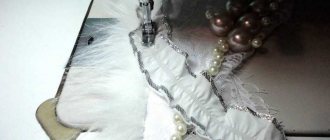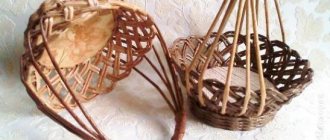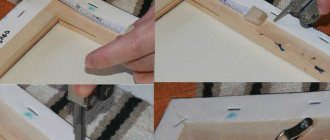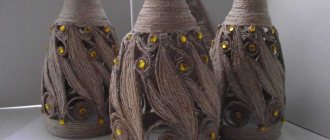- Flower beds made of wooden boxes Light flair of Provence
- Beauty in a wicker basket
The term “flowerbed” refers to a flower bed raised above the lawn in the form of a closed figure, often a geometric shape with clearly defined contours. To decorate them, many amateur gardeners use various construction waste and household items. Creating a flowerbed with your own hands from scrap materials is a fascinating activity that provides the opportunity to use waste items, show your imagination and, sometimes, create original design compositions that will delight your guests and neighbors.
The beauty of plants is emphasized by finishing with stone, brick, boards and other materials
Flowerbeds can be:
- regular planting - their placement, arrangement, flower assortment are carefully planned, observing the laws of geometry, taking into account the uniformity of plant height, simultaneous flowering and other parameters;
- irregular - such flower beds are renewed every year, their location is changed if they are planted only with annuals.
At your summer cottage you can perfectly combine both types. But most gardeners prefer the second option due to its simplicity and naturalness, choosing for planting frost-resistant perennials and favorite annual flowers that will bloom, gradually replacing each other, throughout the season.
The need for fencing
Luxurious flowers without a frame, like a diamond without a frame, have an unfinished look. The fence transforms the appearance of plantings, giving them neatness and presentability. The edge prevents the spreading of ground cover plants, and it also serves as protection for fragile shoots, keeping pets out of them.
On the dacha site you will certainly find wooden and metal scraps, pipes, brick pieces that will cope with the role of flower bed fences. Remains of slate, tiles or linoleum are suitable for these purposes.
Flower arrangements for the garden and cottage
Beautiful combinations of flowers of various heights and colors are the central place in any summer cottage. They help to break up a monotonous environment and create an elegant design.
When creating a composition, you need to take into account that a suitable environment is important for it.
It always attracts attention, so you shouldn’t place it in a place that looks unsightly. For a dacha, it is better to make a landscape-type composition, that is, use all the elements of a suburban area.
Economical flower garden Source www.pinterest.com
With any type of composition, two principles are used to create it - creating contrast or similarity.
For a contrasting composition, choose plants that differ sharply from each other in shape, color, and texture.
Seating area in the gardenSource www.flickr.com
When using the principle of similarity, plants also differ, but only slightly, and the differences are stepwise. For example, a color transition is used from rich red to light red, and from there to pink.
A selection of red flowersSource cz.123rf.com
Another important point is the size of the composition. It should become an organic part of the site, so you don’t need to make it too big or too small. A large size does not make it possible to appreciate the beauty of the flower garden as a whole, and a small one will look frivolous.
First, select the main element. It can be a tree, a tall bush on the site, or a tall flower. The composition with spruce looks very beautiful. Shrubs or perennials should be planted at different distances from it
At the same time, it is important to maintain symmetry and remember that plants with picturesque, lush crowns are not always appropriate here. Although any options are possible in a landscape composition.
Flowers under the treeSource www.mkumodels.com
There is usually only one central element in the composition; its framing is chosen in several copies. And the number of lower-level plants is not even counted; they are taken in the quantity necessary to decorate the background.
Plastic bottles
The easiest option is to fence a flower garden using plastic containers. At the same time, a double problem is solved: the problem of disposal and the design of the flower bed. This method also saves the plantings from moles by blocking their path.
Bottles can be painted in any tone, achieving colorfulness. They are used to make various figures, for example, two graceful swans swimming in a “flowery” lake are unusually beautiful.
The only thing is that before burying containers with their necks in the ground, you should pour soil or pebbles into them for stability.
Fashion trends and non-standard solutions
Modern landscape design offers a wide variety of compositions for flower beds in a suburban area. The main direction is “harmony in simplicity.” There are several ways to implement it.
| Type of design | Solution |
| Monochrome (use of a single color scheme) | Greens in different shades: silver-green, blue-green, dark green, lemon green |
| Green-white: tree hydrangea, derain, astilbe, white peonies, white-flowered primrose, jasmine, spotted-leaved hosta, spirea vangutta, mock orange | |
| Green-pink: peonies, roses, clematis, astilbe, heuchera, chrysanthemums, bergenia | |
| Red: red-leaved maples, ornamental barberries, heucheras | |
| Monoformity (selection of planted plants of a single shape) | A combination of plants with a round crown in one flower bed: spherical willow, spherical thuja, round spirea, large-leaved hydrangea bushes, roses on a trunk, rounded forms of herbaceous plants (gray fescue) |
| Contrast (choosing plants with flowers of rich colors) | Blue-yellow (delphinium, irises, violas, suitable varieties of marigolds, nasturtiums, yellow daylilies) |
| Blue-pink (roses and framed with lavender, verbena, matthiola bicorne) |
Another interesting technique is to create vertical flower beds. Strengthening flower containers on the walls of buildings and planting bright annuals in them will decorate boring corners of the garden, and creating columns with petunias placed throughout the height will add originality and rich aroma, turning a flat area into a luxurious voluminous flower garden. Clematis planted near an old tree (species can be used as it is more resistant to unfavorable conditions) will cover the trunk with a wave of flowers, delighting the summer resident with continuous flowering for 3 months.
Give free rein to your imagination
You don’t need to have professional design skills or spend money to improve your plot of land, just use your imagination. How do you like an overturned bowl from which a flower river flows?
An old barrel, painted to look like a matryoshka doll or any other funny character, looks very cute and unusual. A hedge made from clay pots will turn an inconspicuous fence into a work of art.
Great idea to use a log, remove the inside and plant flowers in the hole. You can turn the stump left after cutting it into an exquisite flower garden by treating it with the same method or simply placing a pot with cascading plants on it.
The toilet, bathtub, and sink also become the basis for floral oases, just like an outdated umbrella or broken cart, “populated” with flowers.
Plant height
plants are often chosen .
The taller ones should not shade the shorter ones. Recent Entries
Chainsaw or electric saw - what to choose for the garden? 4 mistakes when growing tomatoes in pots that almost all housewives make Secrets of growing seedlings from the Japanese, who are very sensitive to the soil
The tallest plants with bright, beautiful flowers are located in the center of the flower bed. You can also add small trees or ornamental shrubs here.
The edges of the flower bed are decorated with low-growing plants.
Medium-sized plants are planted in the center and most of the flower bed.
Let's use tires
Tires that have served their purpose are undoubtedly in every garage. This is the laziest variation on how to make a flowerbed without much effort. They are laid on a flat place or mounted on legs, covered with soil, then plant what you want. Rubber can be painted in any color and installed in several rows, creating a full-scale flowering town.
Note!
- How to make a hot smoked smokehouse - 75 photos of the best ideas and step-by-step instructions
- Molds for paving slabs - easy instructions on how to make them yourself (80 photo ideas)
Feeder for chickens - ideas, description of construction and features of creating feeders from scrap materials
Craftsmen manage to reproduce realistic images of animals and birds after cutting and turning clothes for wheels. Rubber samples hung vertically look stylish and advantageous.
What perennial, unpretentious flowers to plant for a flower bed that bloom all summer?
Even the most beautiful fence can become unnoticed or even become a hindrance if you do not take care of planting in time. Still, flowers are the main thing in a flower bed.
A few tips on how to plant a flowerbed:
- Before you create a flowerbed from scratch, sketch out a diagram on paper. Take into account all the illuminated and shaded places, this will influence the choice of plants in the future.
- The flowerbed should be clearly visible from the front and/or from the windows.
- Plan planting flowers so that it is possible to water each flower without damaging others.
- If the soil is clay or sandy, before planting it is worth enriching it with compost and organic matter.
- The flowerbed must have a good drainage system so that the water does not stagnate.
If your goal is to plant beautiful but easy-to-care flowers, you should pay attention to the following types:
- Lupine
- Perennial cornflower
- Swimsuit
- small petals
- Echinacea
- Day-lily
- Gypsophila
- Primrose
- Delphinium
- English rose
- Pansies
- Phloxes
Lush flowering in the yard
Stones are used
Stone borders are durable and do not require regular maintenance. They are made of sandstone, limestone, granite. Often they use available pebbles or ordinary cobblestones.
It is enough to cover the borders of the flower garden, and it will be completely transformed. The multi-tiered slate composition in the shape of a spiral has a chic look. The specimens are held together with cement for strength.
Step-by-step instruction
Here's how to make a simple, durable rock bed.
- Mark the future flower bed on the ground using a rope and pegs or draw grooves in the ground.
- Prepare a trench around the perimeter up to 30 cm deep. The width depends on the idea of the future flower garden, but you should not make it less than 10 cm to ensure strength and stability.
- It is better to line the foundation of the future flower bed with insulating material (roofing felt, dense polyethylene) or concrete it. This will help prevent weeds from germinating and extend its service life.
- The recess is well compacted and a cushion of sand or small crushed stone 10-15 cm high is made.
- The building material (stones) is inspected for chips and cracks in advance. They are also pre-cleaned of moss, oxide, rust and other deposits.
- You can try to cut off the sharp and strongly protruding parts of the stones or, better yet, discard them.
- Stones are placed around the perimeter and secured with mortar. The solution can only be used at the joints of stones, and it will not be noticeable from the outside. You can pour cement into the formwork where the stones are located. With this option, the fence will be monolithic, like a stone fence, but the cement will also be visible on the connecting seams.
At the finishing stage, the stones can be washed, polished, cleaned with a grinder or a metal brush. They are even painted or varnished.
The main requirement for such a flower garden is stability. Therefore, you need to make sure that all the cobblestones are securely fastened and do not fall out of place during flowerbed maintenance work and do not cause injury.
Wooden structures
Wood fits harmoniously into the natural atmosphere, so homemade objects are often framed with it. True, wood needs to be treated with special compounds for long-term use. The fence looks like a low picket fence, a picket fence, logs, branches and vines.
Wicker fences are very popular, they perfectly complement any vegetation. Extraordinary borders are made from fancy driftwood. If you install a flashlight in a tub, you can admire the created beauty at night.
Preparing a scheme for future plantings
At the preparatory stage, it is necessary to develop in detail a plan diagram of the future site for ornamental gardening.
As part of this process, the following important tasks are solved:
- From the many ready-made varieties of flower beds, one or another arrangement of flowers, stones, shells and sculptural compositions is selected;
- In the absence of a drawing that suits everyone in terms of configuration and number of floors on the Internet or in specialized magazines, geometric, color, and all other characteristics of future plantings are independently selected;
- Using pencils, felt-tip pens, plasticine, colored paper and other available materials, a color model of the future flower bed is built on a kitchen tray or desk;
- If the resulting distribution of color spots seems discordant or inexpressive, then all the necessary adjustments are made to the layout;
- At the final stage of preparation, a decision is made to purchase the required quantities of flower and shrub seeds;
- Next, a general estimate of the upcoming work is drawn up, including the cost of garden gnomes, plaster shells, a statue of Neptune with a trident and other additional components.
Location
More often, flowering corners are arranged near the house or gazebo, but shade-loving varieties are planted in the garden between trees, providing access to them with landscaped paths.
Do-it-yourself flower beds and flower beds play the role of framing paths or individual zones and can be round, oval, square, or rectangular in configuration.
A mixborder laid out with a certain pattern is in demand. Flower beds can form islands, have a stepped structure or vertical planting that saves space. The maximum height of flowers in the center gently decreases towards the edges.
The place for climbing specimens is near the fence, the walls of the gazebo and next to small architectural buildings. Representatives of the flora should have enough light, the distance between them should be maintained taking into account further growth.
Varieties
Beautiful flower beds from such a democratic material as stone can be built by anyone in any conditions on their own. The result will be noticeable immediately and will greatly please you.
The simplest stone flower beds are single-level. They can be of simple geometric shapes - in the form of a triangle, circle, rhombus, square, etc.
If the flowerbed has a fancy shape: a flower, a butterfly, a shell, animal figures, or even a coat of arms or inscription, such a fancy flower bed is called an arabesque.
If space is limited, the best option is to place a high stone flowerbed of a terraced, multi-level type next to the usual plantings. They are useful in wet, marshy areas, as well as in places where there is sometimes not enough sunlight.Recently, more and more often in photos of flower beds made of stones and in real life, you can see fences of the green zone made of metal mesh or lattice, the internal space of which is filled with stones. This design has a special name - gabion.
Gabions are very durable, their walls breathe, the material inside is environmentally friendly, as it does not contain anything inorganic. In such flower beds, plants feel very good, but require watering a little more than usual.
Cobblestones of various shapes and sizes are often used in the design of mountain landscapes, alpine slides, Japanese gardens and rock gardens. These are complex structures that require special knowledge and installation skills.
You can simply make a mark and cover the perimeter of the flower bed with stones, lightly pressing them into the ground. The method is simple, it never loses its relevance, it looks organic, natural and relaxed.
But I want to make the structure stronger and more durable. To do this, the stones are held together with cement mortar and placed in several rows.
Combinations by varietal characteristics
Select varieties that require the same lighting, moisture and soil characteristics. Sunny points are loved by roses, peonies, vines, they will be unobtrusively complemented by small lacy gypsophila and decorative lavender. The rose garden is surrounded by marigolds or salvia, which drive away pests.
Areas bathed in sunshine love tulips, hyacinths, and daffodils. The flowering period must also be taken into account so that the planting is always in a blooming state.
Color combination
An important point is to correctly combine plants by color. Fabulous multi-colored bouquets will delight the eye and lift the mood of the owners, giving the site an indescribable charm. A good alliance of red, blue, yellow shades.
The universal white tone suits all eye-catching colors without exception. The brightness of the tall flowers in the middle of the structure is edged by the delicate colors of their low “brothers”.
Chaotically growing vegetation is much inferior in aesthetic terms to an organized planting with a spectacular fence. Photos of decorating flower beds with your own hands are a clear confirmation of this.
When creating colorful ensembles, remember about drainage and timely watering so that your plant world does not lose its visual appeal and riot of colors.
Coloristics
Great care needs to be taken when selecting colors. A good tip is to first draw an imaginary flower bed on paper. Flowers must complement each other. Wrong shades can cause irritation.
To create a general background, as a rule, cool shades are used: green, dark blue, purple.
Warm shades are dominant: yellow, red, orange.
Contrasting combinations of shades are invigorating, and smooth transitions from one color to another are calming.











